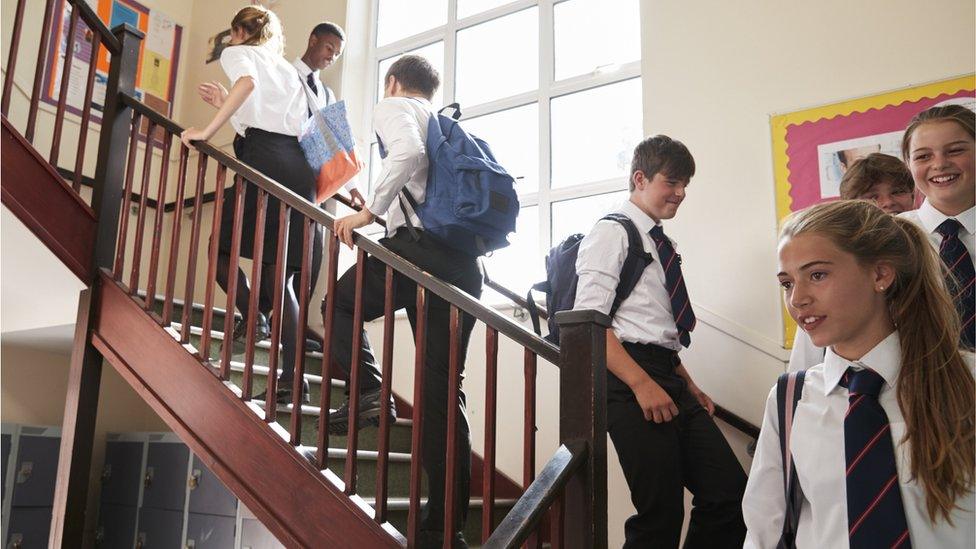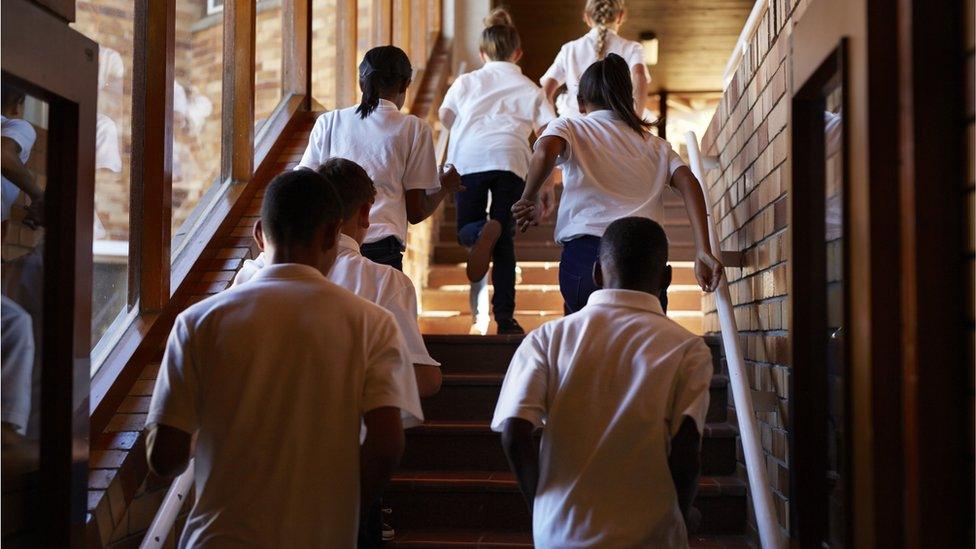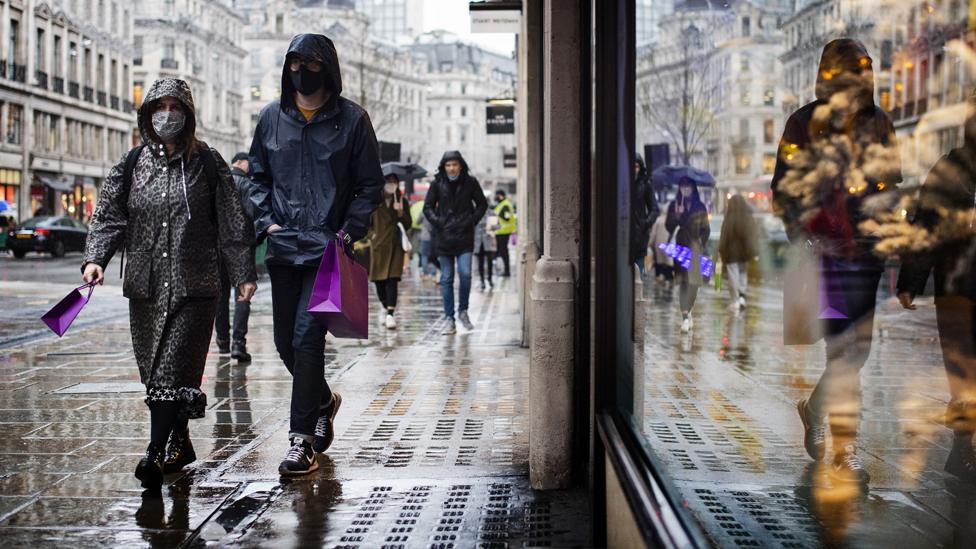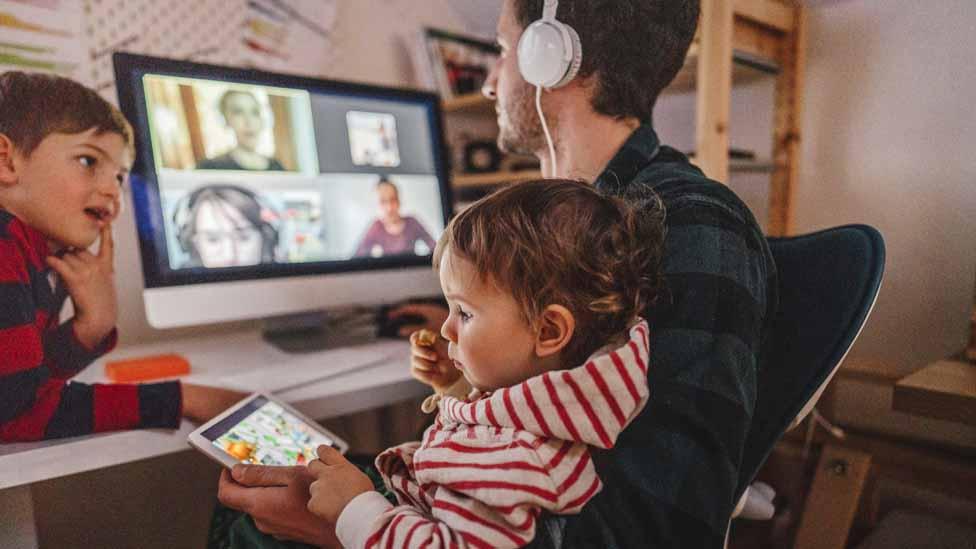Covid cases in schools 'reflect community levels'
- Published

Covid cases in schools reflect virus levels in the local community, a study of 100 schools across England suggests.
In tests on nearly 10,000 staff and pupils in November, 1.24% of pupils and 1.29% of staff tested positive for coronavirus in schools.
This is a combined analysis from Public Health England, Office for National Statistics and the London School of Hygiene and Tropical Medicine.
The researchers suggest school closures have only a temporary effect on cases.
And they add driving down infections in wider society is the best way to keep schools open and safe.
The Schools Infection Survey, external will continue to track cases and transmission in schools over the coming months.
It comes as mass testing of schools pupils in England is to be expanded in January, with most pupils having their return to school delayed by a week to allow time for the scheme to be set up.
The first round of survey results are based on tests of more than 6,000 pupils and nearly 5,000 staff from 105 schools - 63 secondary and 42 primary - in areas of England where the virus was spreading quickly at the start of the school year.
Children and staff had to be in school to be given a nasal swab test, and so are unlikely to have had symptoms.
The survey found a higher percentage of staff and pupils testing positive for the virus in secondary schools than primary schools - around 1.47% compared to around 0.8%.
Roughly 1.2% of the general population is estimated to have had the coronavirus during the same period, according to the ONS.

Dr Shamez Ladhani, the study's chief investigator and a consultant at Public Health England, said: "While there is still more research to be done, these results appear to show that the rate of infection among students and staff attending school closely mirrors what's happening outside the school gates.
"That's why we all need to take responsibility for driving infections down if we want to keep schools open and safe for our children."
The researchers are trying to find out more about the role of schools in the spread of the virus - something that has been a challenge so far.
The key is to discover whether infections are more likely to be brought into school from outside, or are starting in school and moving into households in the community.
School testing
Data from PHE so far suggests infections in school year groups are being introduced from different sources rather than being spread between pupils in schools, but genetic analysis of virus strains is needed to confirm this, Dr Ladhani says.
This would give more detailed information on the order in which the virus had passed from person to person.
After schools reopened in the autumn, Dr Ladhani said the rate of infections in all year groups had been rising every week, with older pupils seeing the biggest increases.
He explained that lockdowns have a greater impact on adult infection rates rather than children's, but there is often a delayed effect in children a week later than seen in adults. Closing schools would only have a "temporary effect", Dr Ladhani added.
Prof James Hargreaves, co-chief investigator of the study from LSHTM, said the more information collected within schools "the better understanding we have of their role in transmission within the wider community and how to minimise SARS-CoV2 transmission".
"We hope to answer questions to ensure children's education can continue in the safest way possible," he said.
As part of the study, pupils and staff will be tested for the virus and also for antibodies - signs they have had it in the past - throughout the school year.
The aim is to detect new cases, monitor absences from school and find out how well measures to control the virus work in schools.
Related topics
- Published11 December 2020

- Published23 February 2022

- Published13 November 2020

- Published4 November 2020
